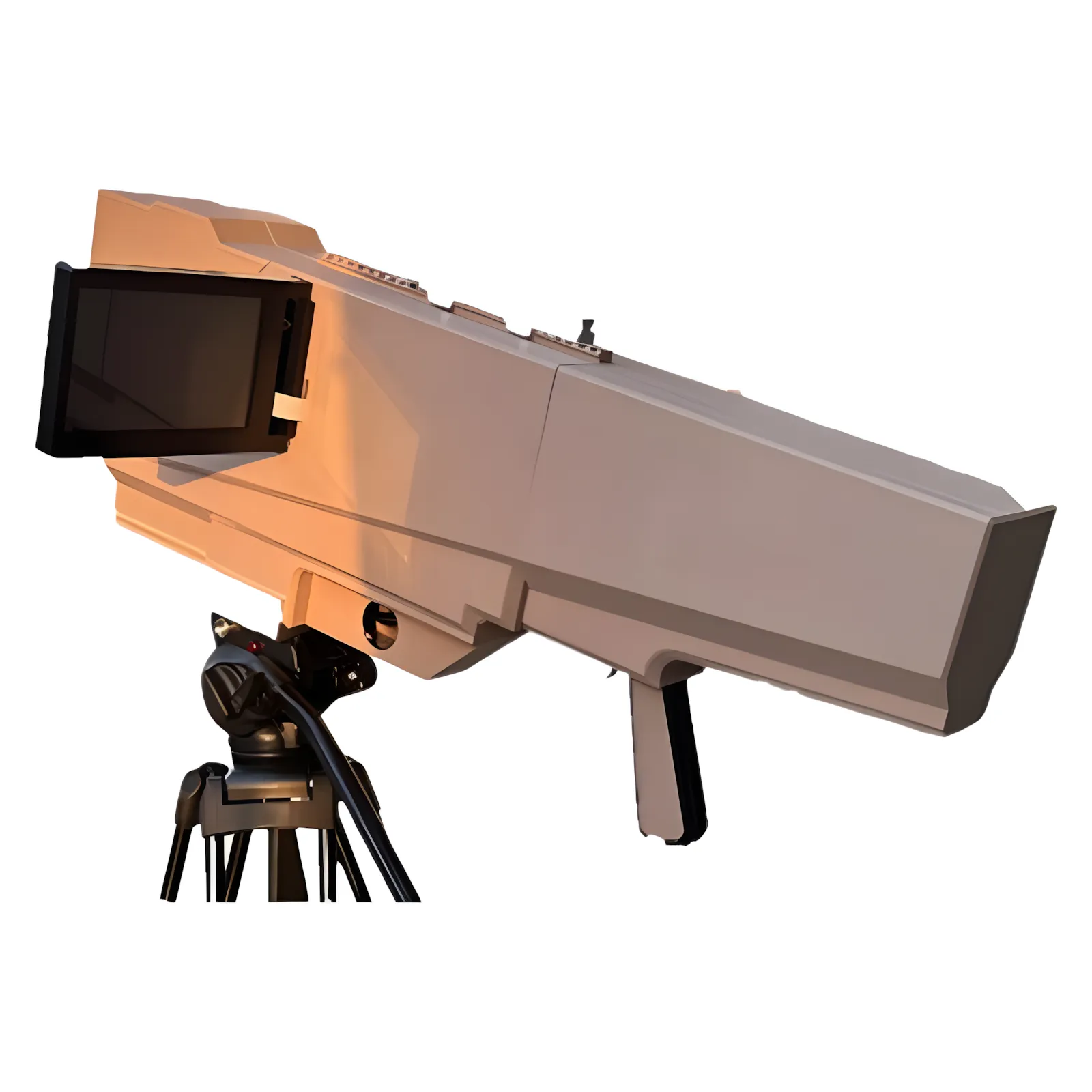Საოცარი შემოწმებისთვის დრონების ინტეგრაციამ რევოლუცია გამოიწვია იმ გზებში, რომლითაც ბიზნესი მიდის ინფრასტრუქტურის მონიტორინგის, უსაფრთხოების შეფასებისა და ხარისხის კონტროლისკენ. ეს ტექნოლოგიური პროგრესი ტრადიციული შემოწმების მეთოდებიდან მნიშვნელოვანი ნაბიჯი წინ წარმოადგენს და უმაღლეს ეფექტურობასა და სიზუსტეს უზრუნველყოფს. როგორც კი ინდუსტრიები განვითარდებიან, იმდენად იზრდება უპილოტო ტექნოლოგიის ათვისება, რომელიც უკვე არ არის უბრალო ინოვაცია, არამედ აუცილებელი პირობა კონკურენტუნარიანობის შესანარჩუნებლად დღევანდელ სწრაფი ტემპის ბიზნეს გარემოში.
Ისტორიულად, მრეწველობის შემოწმებზე ძალიან დიდი დამოკიდებულება ჰქონდა ხელით შესრულებულ პროცესებზე, რომლებიც მოითხოვდნენ მუშათა ფიზიკურ წვდომას ხშირად საფრთხის შემცველ ან მიუწვდომელ ადგილებში. ეს ტრადიციული მიდგომები არა მხოლოდ უზრუნველყოფდნენ მნიშვნელოვან უსაფრთხოების რისკებს, არამედ მოითხოვდნენ დროსა და რესურსების დიდ რაოდენობას. მაღალი სტრუქტურების შესამოწმებლად მუშებს ჭიქოვანი და ასა lifts ან კაბელური წვდომის სისტემები სჭირდათ, ხოლო შეზღუდული სივრცეები საკუთარ გამოწვევებსა და საფრთხეებს წარმოადგენდნენ.
Ტრადიციული შემოწმების მეთოდების შეზღუდვები უსაფრთხოებასთან დაკავშირებულ concerns-ს გადაცილებულია. შემოწმების ხარისხი და ერთგვაროვნება შესამჩნევად შეიძლება განსხვავდებოდეს ინსპექტორის გამოცდილებისა და ფიზიკური შესაძლებლობების მიხედვით. გარდა ამისა, შედეგების დოკუმენტირება ხშირად ითხოვდა ხელით ჩანაწერებს და საბაზისო ფოტოგრაფიას, რაც რთული ხდიდა დეტალური ჩანაწერების შენახვას ან მთლიანი ანალიზის ჩატარებას.
Სმარტ შემოწმებისთვის დრონების გამოყენებამ მოგვარია ამ ტრადიციული შეზღუდვების უმეტესობა. ამ ავტომატურმა აეროსაშუალებებმა, რომლებიც აღჭურვილი არის მაღალი გაფართოების კამერებით და საშუალებებით, შეძლებენ წვდომას იმ ადგილებში, რომლებშიც წვდომა ადრე რთული იყო ან შეუძლებელი. ტექნოლოგია განვითარდა მარტივი მფრინავი კამერებიდან მოწინავე მონაცემთა შეგროვების პლატფორმებამდე, რომლებიც ხელმისაწვდომი ხდის თერმულ გამოსახულებას, 3D გადასახვებს და დეტალურ სტრუქტურულ ანალიზს.
Თანამედროვე შემოწმების დრონები იყენებენ ხელოვნურ ინტელექტს და მანქანური სწავლის შესაძლებლობებს, რაც საშუალებას აძლევს მათ აღმოაჩინონ ანომალიები და პოტენციური პრობლემები, რომლებიც ადამიანის მიერ შეიძლება გამორჩენილი იყოს. ამ ტექნოლოგიურმა განვითარებამ შექმნა ახალი სტანდარტი შემოწმების სიზუსტისა და საიმედოობის მიმართ სხვადასხვა ინდუსტრიაში.

Ერთ-ერთი უმნიშვნელოვანესი უპირატესობა სმარტ ინსპექტირებისას დრონის გამოყენების შესახებ არის შრომის უსაფრთხოების მკვეთრად გაუმჯობესება. პერსონალის ფიზიკური წვდომის აღმოფხვრით სახიფათო ზონებში, ორგანიზაციებს შეუძლიათ მნიშვნელოვნად შეამცირონ სამუშაო ადგილებზე შემთხვევები და დაზიანებები. დრონები შეუძლიათ შეამოწმონ მაღალი შენობები, გადახურებული მშენებლობები, ხიდები და სხვა ინფრასტრუქტურა, ხოლო ოპერატორები უსაფრთხოდ დარჩნენ მიწაზე.
Რისკის შემცირება ვრცელდება პირადი უსაფრთხოების მიღმა ასევე მოწყობილობების დაცვაზეც. დრონებს შეუძლიათ მოახდინონ მიმდებარე ინსპექტირება მგრძნობიარე ან სუსტი სტრუქტურების, რისკის გარეშე ზიანის მიყენებისა, რომელიც შეიძლება მოხდეს ტრადიციული ინსპექტირების მეთოდების გამოყენებისას. ეს უკონტაქტო მიდგომა განსაკუთრებით მნიშვნელოვანია ისტორიული შენობების ან ნა delicate ინდუსტრიული მოწყობილობების შემთხვევაში.
Საჰაერო დრონების ტექნოლოგიის გამოყენების ეკონომიკური უპირატესობა მნიშვნელოვანია. ხელმისაწვდომობისთვის საჭირო ძვირადღირებული მოწყობილობებისა და დიდი ინსპექტორთა გუნდების საჭიროების შემცირებით ორგანიზაციებს შეუძლიათ მნიშვნელოვნად შეამცირონ მათი ოპერაციული ხარჯები. სმარტ შემოწმებისთვის დრონი შეიძლება დაასრულოს დავალებები საათებში, რაც ჩვეულებრივ დღეებს ან კვირებს შეიძლება დასჭირდეს, რაც იწვევს მნიშვნელოვან დროის ეკონომიას და პროდუქტიულობის ზრდას.
Ეფექტიანობის მოგება ასევე ითარგმნება შემოწმების დროს დანადგარებისა და მოწყობილობების შეჩერების შემცირებაში. უფრო სწრაფმა შემოწმებამ შეიძლება შეამციროს ჩვეულებრივი ოპერაციების შეფერხება, რასაც ორგანიზაციის საბოლოო შედეგზე შეიძლება მნიშვნელოვანი დადებითი გავლენა მოახდინოს. გარდა ამისა, ხშირი შემოწმების ჩატარების შესაძლებლობა დამატებითი ხარჯების გარეშე უზრუნველყოფს უკეთეს პრევენციულ მოვლას და პოტენციური პრობლემების დროულ აღმოჩენას.
Თანამედროვე საშუბლები, რომლებიც აღჭურვილი არის გამოჩერებული იმიჯინგის სისტემებით, შეუძლიათ მოაგროვონ საკმაოდ დეტალური ვიზუალური მონაცემები, მათ შორის 4K ვიდეო ჩანაწერები, თერმული იმიჯინგი და მრავალსპექტრალური მონაცემები. ეს სრული დოკუმენტაცია ქმნის ფასეულ ციფრულ ჩანაწერს, რომელიც შეიძლება გამოყენებულ იქნას ისტორიული შედარებისთვის, ტენდენციების ანალიზისთვის და პრევენტიული შეკვეთისთვის. დეტალური შემოწმების მონაცემების ციფრულად შენახვისა და წვდომის შესაძლებლობა ასევე ამარტივებს ანგარიშების და შესაბამისობის დოკუმენტაციას.
Საშუბლის მიერ შეგროვებული მონაცემების სიზუსტე სმარტ შემოწმებისთვის საშუალებას იძლევა შეიქმნას ზუსტი 3D მოდელები და ციფრული ასლები შემოწმებული აქტივებისთვის. ეს დეტალური ციფრული წარმოდგენები შეიძლება გამოდგეს ფასეული შეკვეთის, მოდიფიკაციების ან არსებული ინფრასტრუქტურის განახლების დაგეგმვისთვის.
Ხელოვნური ინტელექტისა და მანქანური სწავლების ალგორითმების ინტეგრაცია შესაძლებლობას იძლევა შემოწმების მონაცემების რეალურ დროში დამუშავებისთვის. ეს სისტემები ავტომატურად შეიძლება გამოავლინონ პოტენციური პრობლემები, დააკლასიფიცირონ დეფექტები და შექმნან დეტალური შემოწმების ანგარიშები. ამ დროული ანალიზის შესაძლებლობა უფრო სწრაფ გადაწყვეტილებების მიღებასა და უფრო მოქნილ შენარჩუნების დაგეგმვას უზრუნველყოფს.
Საჰაერო ინსპექტირების სისტემებთან დაკავშირებული ღრუბლოვანი პლატფორმები შესაძლებლობას იძლევა შედეგების დამოუკიდებლად ადგილმდებარეობისა დამოუკიდებლად მიმღებთან დაკავშირებით. ეს გაუმჯობესებული კომუნიკაცია და თანამშრომლობა მნიშვნელოვნად ამაღლებს შენარჩუნების ოპერაციებისა და პროექტების მართვის ეფექტიანობას.
Სამრეწველო შემოწმების სფეროში დრონების ტექნოლოგიის მომავალი წარმატებით ვითარდება, რადგან ხშირად ჩნდება ახალი ინოვაციები. მაღალი ხარისხის სენსორები, გაუმჯობესებული აკუმულატორები და გაძლიერებული ავტონომიური შესაძლებლობები ზრდის დრონების გამოყენების პოტენციალს ინსპექტირების სფეროში. 5G კავშირგების ინტეგრაცია საშუალებას მოგვცემს უფრო მაღალი დონის რეალურ-დროში მონაცემთა დამუშავება და დაშორებული ოპერაციები.
Ორგანიზებული ჯგუფების (swarm) ტექნოლოგიის განვითარება მალე შესაძლებლად გახდის რამდენიმე დრონის ერთობლივ კოოპერაციას, რაც კიდევ უფრო გაზრდის შემოწმების ოპერაციების ეფექტიანობას და მოхватს. განსაკუთრებით, ხელოვნური ინტელექტის გაუმჯობესება შესაძლებლად გახდის დრონების ავტონომიურ გადაწყვეტილებების მიღებას და შემოწმების პირობებში მოხდენილი ცვლილებების მიხედვით ადაპტაციას.
Რადგან სასიამოვნო შემოწმებისთვის დრონების გამოყენების უპირატესობები increasingly ხდება უფრო გამოკვეთილი, მეტი ინდუსტრია იყენებს ამ ტექნოლოგიას სტანდარტულ ოპერაციებში. რეგულატორული ჩარჩოები ივითარება დრონების ზრდასთან ერთად, რათა უზრუნველყოს უსაფრთხოება და კერძო ცხოვრება.
Ორგანიზაციები, რომლებიც ადრე იღებენ დრონის შემოწმების ტექნოლოგიას, იღებენ კონკურენტულ უპირატესობას ეფექტიანობის გაუმჯობესებით, ხარჯების შემცირებით და უსაფრთხოების ჩაწერით. ინდუსტრიისთვის დამახასიათებელი აპლიკაციებისა და გამოყენების შემთხვევების განვითარება გააგრძელებს დრონის ტექნოლოგიის გამოყენების გავრცელებას სხვადასხვა სექტორში.
Დრონების შემოწმები ხშირად უფრო მაღალ სიზუსტეს გვაძლევს, ვიდრე ტრადიციული მეთოდები, რადგან ისინი ხელმისაწვდომობას უზრუნველყოფენ დამატებით გაუმჯობესებულ ვიზუალიზაციასა და მუდმივ მონაცემთა შეგროვებას. მაღალი გარჩევადობის კამერები და სპეციალიზებული სენსორები შეუძლიათ აღმოაჩინონ პრობლემები, რომლებიც შეიძლება ადამიანის მიერ გამოტოვდეს, ხოლო ხელოვნური ინტელექტით დაფუძნებული ანალიზი უზრუნველყოფს შეფასების მუდმივ სტანდარტებს.
Დრონების შემოწმების გამოყენებით შეიძლება მოიგონ მრავალი ინდუსტრია, მათ შორის მშენებლობა, ენერგეტიკა, სოფლის მეურნეობა, ტელეკომუნიკაციები, უძრავი ქონება და ინფრასტრუქტურის შენარჩუნება. ნებისმიერი სექტორი, რომელიც მოითხოვს დიდი სტრუქტურების, დანიშნულების ან ტერიტორიების რეგულარულ შემოწმებას, შეიძლება გააუმჯობესოს მისი ოპერაციები დრონების ტექნოლოგიის გამოყენებით.
Თანამედროვე დრონები უფრო მეტად ხდება მყარი, მაგრამ ზოგიერთ ამინდის პირობებში შეიძლება მოხდეს მათი ექსპლუატაციის შეზღუდვა. სიმაღლის ქარი, მძიმე წვიმა, თოვლი და ექსტრემალური ტემპერატურა შეიძლება შეზღუდოს ან შეაჩეროს დრონის ფრენა. თუმცა, მრავალი პროფესიონალური ინსპექტირების დრონი შეიმუშავება ისე, რომ იმუშაოს საშუალო ქარის და მსუბუქი ნალექების პირობებში, ზოგიერთი სპეციალიზებული მოდელი კი უფრო რთულ პირობებშიც შეუძლია მუშაობა.
 Გამარჯვებული ახალიები
Გამარჯვებული ახალიები